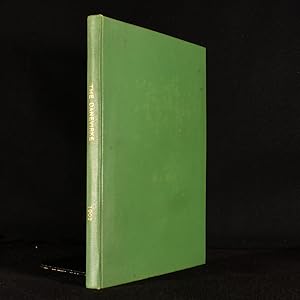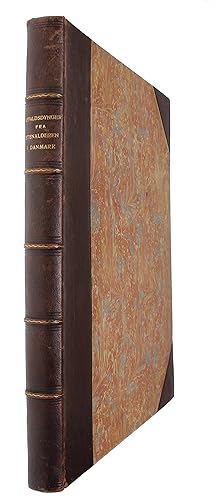muller sophus carl neergaard (3 résultats)
Type d'article
- Tous les types d'articles
- Livres (3)
- Magazines & Périodiques
- Bandes dessinées
- Partitions de musique
- Art, Affiches et Gravures
- Photographies
- Cartes
-
Manuscrits &
Papiers anciens
Etat
- Tous
- Neuf
- Ancien ou d'occasion
Reliure
Particularités
- Edition originale (1)
- Signé
- Jaquette
- Avec images (2)
- Sans impression à la demande
Pays
Evaluation du vendeur
-
Danevirke, archæologisk Undersøgt, beskrevet og tydet.
Vendeur : Lynge & Søn ILAB-ABF, Copenhagen, Danemark
Membre d'association : ILAB
(K., 1903). Fol. (130) pp., tekstillustr og 8 plancher.
-
Danevirke Archaeologisk Undersogt Beskrevet og Tydet
Edité par Not stated, Not stated, 1903
Edition originale
Cloth. Etat : Very Good Indeed. Not stated (illustrateur). First edition. The very scarce first edition of this Danish archaeological study accompanied by monochrome plates and rebound in modern cloth. First edition of Danevirke Archaeologisk Undersogt Beskrevet og Tydet by Sophus Muller and Carl Neergaard rebound in modern cloth binding.The title translates to 'Denmark, Archaeological Survey Described and Deciphered'.No title page or publication information provided.With illustrations throughout the text and six monochrome plates to the rear, numbered thirty one to thirty six. Plate thirty six is detached.Prior owner's book plate to the first pastedown. In rebound modern cloth binding. Externally, excellent. There is very slight bumping to the head and tail of the spine. Prior owner's book plate to the first pastedown. Internally, firmly bound. Plate 36 is detached. The pages are bright and clean with the occasional spot. Very Good Indeed. book.
-
Affaldsdynger fra Stenalderen i Danmark Undersøgte for Nationalmuseet. Résumé en Francais.
Vendeur : Lynge & Søn ILAB-ABF, Copenhagen, Danemark
Membre d'association : ILAB
Paris, København & Leipzig, Hachette, Reitzel & Brockhaus, 1900. Large 4to (360 x 295 mm). Bound with the original printed wrappers in contemporary half calf with five raised bands and gilt lettering to spine. Ex-libris (Preben Rønne) pasted on to pasted down front end-paper. A few scratches and light discolouration to spine, otherwise a very fine and clean copy. 196 pp. + 11 plates. First appearance of Hansen?s et al?s famous work on kitchen middens (Køkkenmøddinger) which concluded the work of ?The Second køkkenmøddingkommission? 1893-1895. It was the large shell pile at Ertebølle In the Limfjord, which was the main site of the commission's work. These kitchen middens provided completely new insights into prehistory, on a national as well as international level. Through the finds, it was possible to study the earliest organization of prehistoric societies. The commission's interdisciplinary work as well as the results of the First Kitchen Mødding Commission in the 1840s and 1850s have had an enormous influence on archaeologists' work with chronology in Danish prehistory and our knowledge of the Stone Age in general. In the study it is concluded that they are not a unique type of coastal settlement but represent coastal, homebase settlements characterized by a dominance of shellfish in the cultural deposits. This is the only aspect by which they differ from the rest of the coastal habitation system. Shell midden sites seem to flourish in periods characterized by a rich marine biotope and coastal habitation can be seen as a direct reflection of variations/changes in the marine biotope. The kitchen middens were a hot issue in the international debate in the later 19th century, palynology was developed there, and the registration of human impact in the primeval forests in the pollen record discovered and explained. Denmark is regarded as being one of the core regions of Stone Age discoveries and hence also being a center for the development of ideas about Mesolithic and Neolithic societies. Later Scandinavian models for Mesolithic societies and their transition to farming were seen as representative for a far wider region, if not for the whole of Europe. Due to the extensive and important Danish research on kitchen middens, the Danish word ?Køkkenmødding? (also spelled ?Kokkenmodding?) is often used in international archaeological literature.




